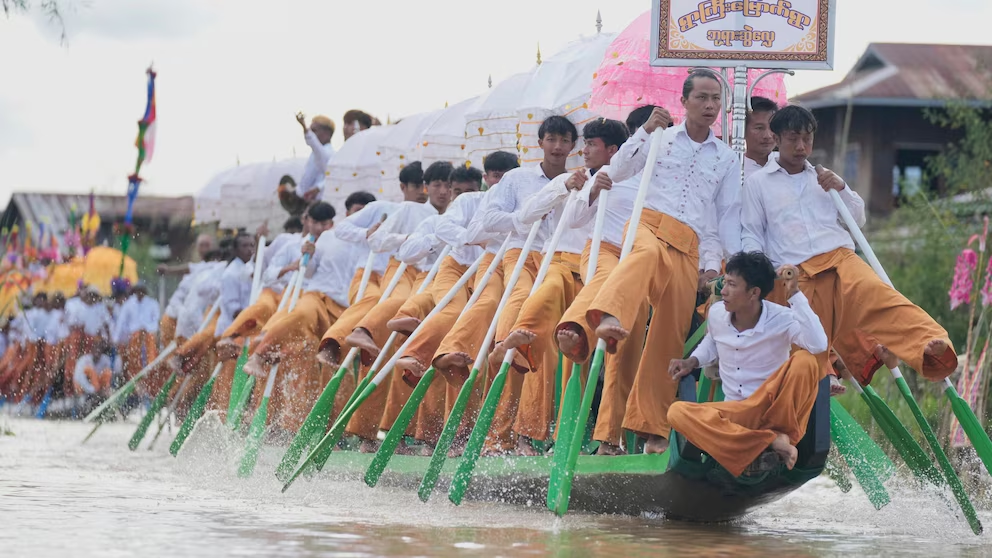
Inle Lake Festival Endures Amid Quakes and Crisis
INLE LAKE, Myanmar – Against the backdrop of political turmoil, natural disasters, and the lingering shadow of the COVID-19 pandemic, Myanmar’s most iconic celebration — the Phaung Daw Oo Pagoda Festival — has returned this year with resilience and devotion. Held annually on the shimmering waters of Inle Lake in Shan State, this centuries-old Buddhist festival is both a cherished spiritual event and one of Myanmar’s top cultural attractions, drawing thousands of pilgrims, visitors, and locals.
A Festival of Faith and Culture
The festival centers on five revered Buddha images housed at the Phaung Daw Oo Pagoda, one of the most sacred religious sites in Shan State. Each year, four of these images are placed on a spectacular golden barge designed in the shape of the mythical Karaweik bird. Accompanied by dozens of boats rowed by the Intha people — famous for their distinctive one-leg rowing technique — the procession carries the images to 21 villages around Inle Lake.
The journey takes over two weeks, giving each village the honor of hosting the Buddha images so residents can pay homage and make merit. For local communities, the festival is not only a sacred tradition but also an anchor of identity, culture, and economic livelihood. For tourists, it is a dazzling sight, where gilded boats glide across the mountain-fringed waters, framed by vibrant markets, cultural performances, and offerings from villagers dressed in traditional Shan attire.
Interrupted Traditions
Despite its grandeur, the Phaung Daw Oo Festival has faced repeated interruptions in recent years.
2020: The COVID-19 pandemic forced the cancellation of nearly all major gatherings in Myanmar. Inle Lake, once bustling with international travelers, fell silent.
2021: The military coup and the nationwide unrest that followed led to another suspension. Travel became restricted, and safety concerns overshadowed cultural life.
2022: The festival remained muted as civil war spread to many regions of the country.
2023: Though celebrations resumed, devastating floods struck Shan State, again disrupting the event.
Locals describe these years as a time when joy was repeatedly stolen. Yet their determination to maintain the tradition never faded. “It is our heritage. Even if there are hardships, the Buddha must still travel to the villages,” one elder remarked.
Earthquake Devastation
This year’s celebration unfolded under the shadow of a new calamity — the 7.7 magnitude earthquake that struck Myanmar on March 28, 2025. The quake killed more than 3,800 people nationwide and left tens of thousands homeless. While central Myanmar bore the heaviest losses, Inle Lake was far from spared.
Entire villages built on wooden stilts above the water were severely damaged. Reports from local communities suggest that up to 90 percent of homes in certain areas collapsed or were left uninhabitable. The death toll around the lake is unofficially estimated between 50 and 90, with more than 13,000 residents affected.
“Not all the houses are standing straight,” explained Nyi Nyi Zaw, a 42-year-old Intha villager. “Repairs were done quickly, but not carefully. To fix them properly, we must wait until the lake dries up in summer.” His own home was among those damaged, yet he still took part in the festival’s preparations.
Resilience in the Face of Adversity
For many locals, the return of the festival — even in such difficult times — is a symbol of endurance. “The tourism industry collapsed after the pandemic, then came the coup, then the floods, and now the earthquake,” said Nyi Nyi Zaw, who once worked as a tour guide but now takes up general labor. “It was like miseries upon miseries. But still, the festival continues.”
Ma Win, a weaver and textile seller from Inle Lake, echoed this sentiment. She recalled that her village had not hosted the Buddha statues in years. “So when the golden barge came, we offered what we could. Even if business is bad, tradition is more important,” she said.
For residents, the festival is not only an expression of faith but also a collective act of healing. Rebuilding lives and homes after disaster is difficult, but keeping alive the rituals that bind communities gives people hope.
The Intha Rowers and Their Legacy
One of the festival’s most striking features is the fleet of boats rowed by Intha men, using their unique technique of balancing on one leg while wrapping the other around an oar. This centuries-old style allows rowers to see above floating vegetation and navigate swiftly across the lake. The spectacle of dozens of these boats escorting the golden barge is a defining image of Inle Lake.
The rowing competition, held alongside the religious procession, is another highlight. Teams from various villages compete with pride, often cheered on by thousands of spectators lining the lake’s edge. For the Intha people, it is both sport and cultural heritage, linking younger generations to their ancestors.
Tourism and Economic Impact
Before the pandemic, Inle Lake was one of Myanmar’s most visited destinations, known for its floating gardens, traditional handicrafts, and picturesque stilt-house villages. The festival drew international visitors who filled hotels and guesthouses in Nyaung Shwe, the main gateway to the lake.
But the collapse of tourism in recent years has left many businesses struggling. Boatmen, guides, artisans, and hoteliers have been forced to take on other jobs or migrate. This year, the festival revived some activity, but foreign tourist numbers remain low due to ongoing instability and travel advisories.
Still, for local vendors like Ma Win, every visitor counts. “Even if sales are not like before, we are happy to see people coming again,” she said.
Cultural and Spiritual Significance
Beyond economics, the Phaung Daw Oo Pagoda Festival is deeply spiritual. Many pilgrims believe that receiving the blessing of the Buddha images can bring health, prosperity, and peace of mind. Villagers spend weeks preparing offerings, decorating their homes, and welcoming guests. The sound of drums, cymbals, and gongs fills the air as the golden barge arrives, greeted with chants of devotion.
It is this sense of continuity — of honoring the past while facing the present — that keeps the festival alive. Even amid crisis, Inle Lake’s people see the festival as a divine duty.
Looking Ahead
The challenges remain daunting. Earthquake recovery is ongoing, with many homes still in precarious condition. Political uncertainty clouds the future of tourism and community stability. Yet the determination to uphold tradition gives locals strength.
As one elder told Myanmar.com: “The festival reminds us that no matter how difficult life becomes, faith will carry us forward. The Buddha still visits our villages. That means hope is not lost.”
Related posts:
 US Imposes Sanctions on Myanmar–North Korea Arms Network
US Imposes Sanctions on Myanmar–North Korea Arms Network
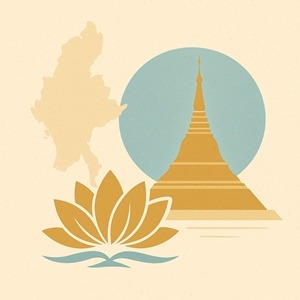 Myanmar Earthquake – A Nation in Crisis Amidst Disaster
Myanmar Earthquake – A Nation in Crisis Amidst Disaster
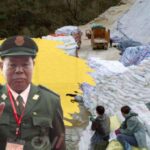 India–KIA Cooperation: Trade Routes, Security, and Risks
India–KIA Cooperation: Trade Routes, Security, and Risks
 East Timor’s ASEAN Gamble: Mending Ties with Myanmar Junta
East Timor’s ASEAN Gamble: Mending Ties with Myanmar Junta
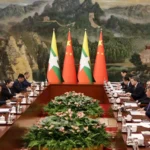 Dozens Killed in Chaung-U as Myanmar Military Launches Paraglider Attack
Dozens Killed in Chaung-U as Myanmar Military Launches Paraglider Attack
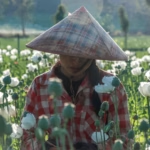 Myanmar Opium Poppy Farming Surges Amid Conflict
Myanmar Opium Poppy Farming Surges Amid Conflict
